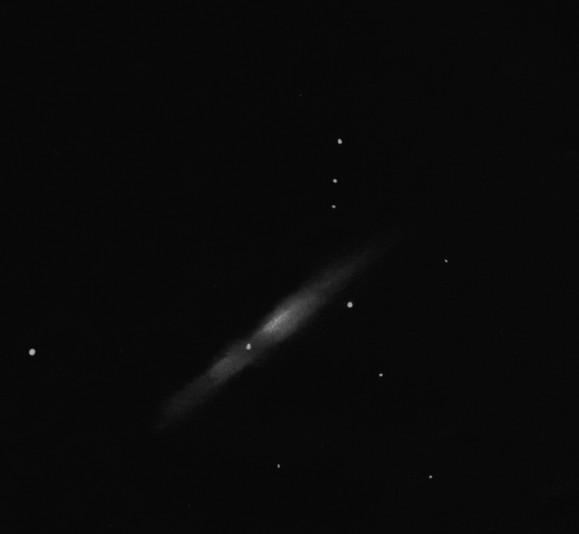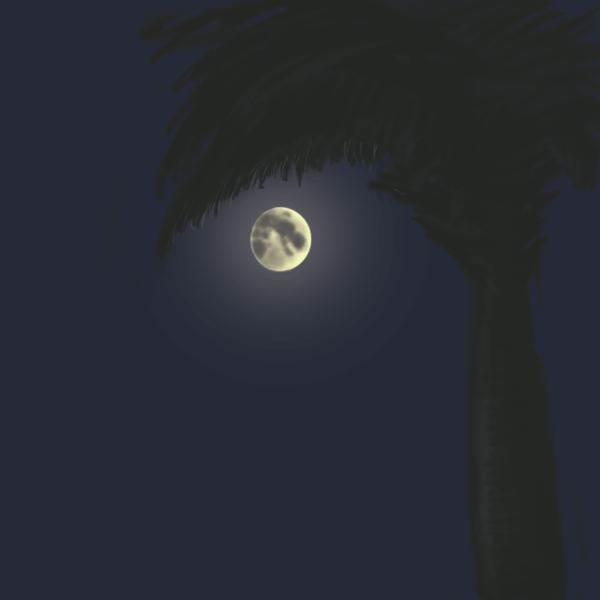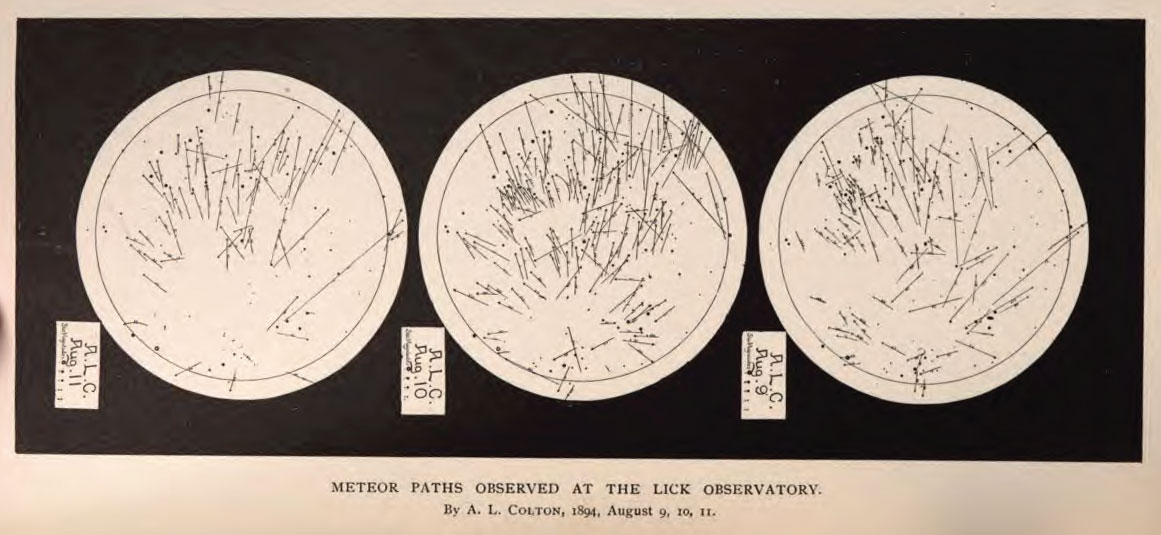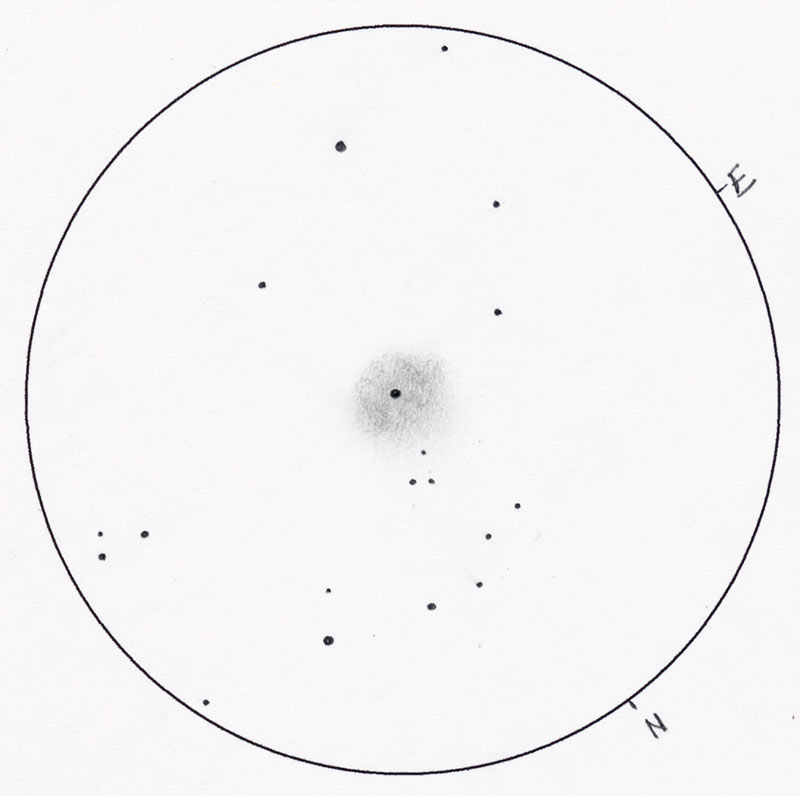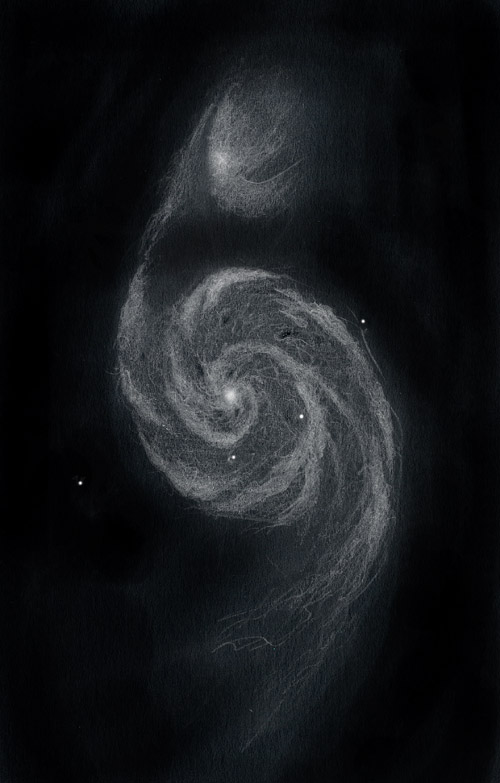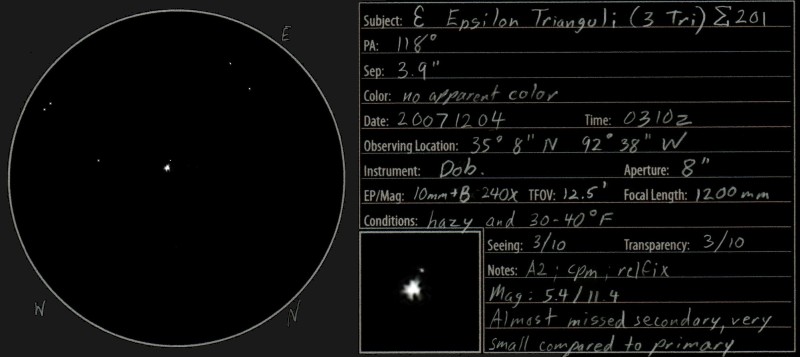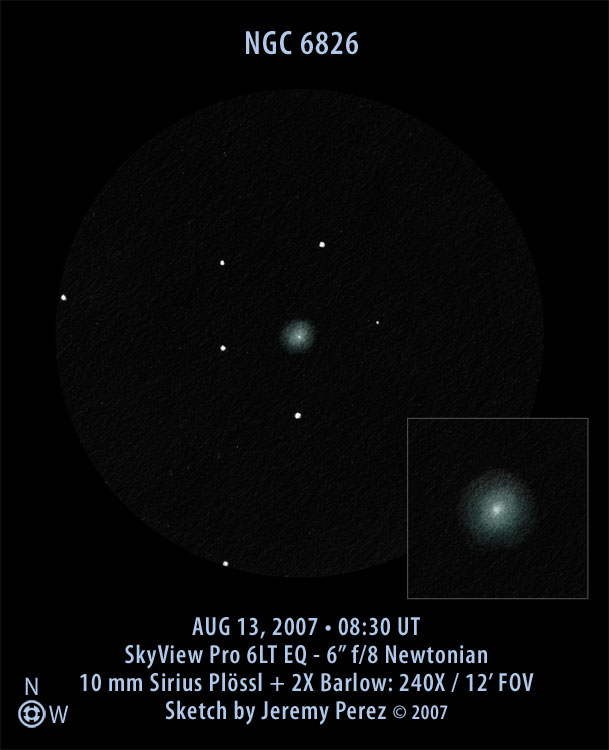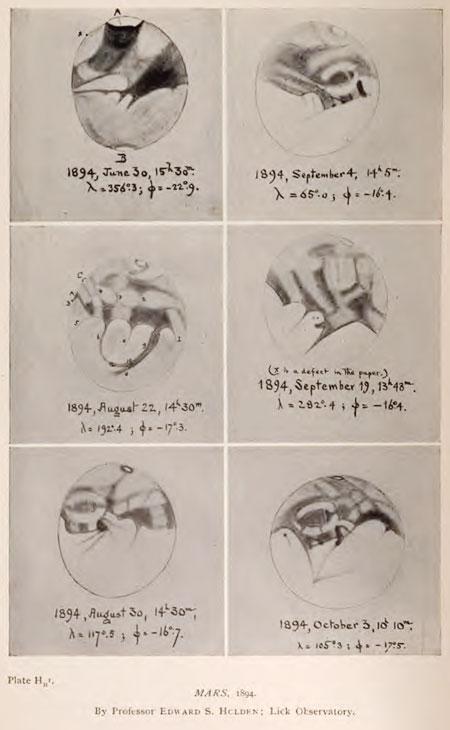NGC 7090
Sketch by Eiji Kato
Author: Jeremy Perez
A Waxing Gibbous Moon
Moon
Sketch and Details by Carlos E. Hernandez
The waxing Gibbous Moon (11.9 days old) was visible over the western horizon on April 17, 2008 (07:30 U.T.). The Moon appeared a yellowish tinge while visible beneath a palm frond. The scene was both eerie and beautiful.
A digital rendering produced in Photoshop CS3.
Carlos
A Radiant August
August 1894 Meteor Shower
Drawings by A. L. Colton
LLUSTRATIONS OF THE AUGUST METEORS OF 1894,
As OBSERVED AT THE LICK OBSERVATORY.
On page 294 of the previous publication is a note by Professor HOLDEN on the observations of the August meteors of 1894. The charts drawn by Messrs. COLTON and FERRINE showing the paths of the meteors observed by them at Mount Hamilton, and the diagram of frequency- curves compiled by Mr. POOLE, are reproduced in miniature in this number. It is, perhaps, to be regretted that the scale is so small; the illustrations will, however, convey a good general idea of the work which was done. The reduction of the observations will be made with the aid of the original charts, which are on so large a scale as to meet every requirement. J. M. S.
As published in the Publications of the Astronomical Society of the Pacific – Volume VII – 1895, pages 58 and 77, Available via Google Books.
Majestic Swarm
NGC 5139 (Omega Centauri)
Sketch and Details by Dave Riddle
My attempt to sketch Omega Centauri caused me to recall the trials faced by Frederick Catherwood, the famed British illustrator, while he tried to capture the Mayan “idols” found in Central America during the early 1800s. As recounted in C. W. Ceram’s “Gods, Graves, and Scholars”, Catherwood faced the daunting task of reproducing forms that were utterly different from any any thing he had experienced before and “for a time his crayon simply would not function.”
I spent an hour or so studying NGC 5139 before starting my sketch. Using a 12″ Schmidt-Cassegrain at 100X, prominent stars chains, clumps of stars and mysterious dark voids made their appearance. At first glance, Omega had appeared as a rather structureless oblate globe of stars.
My original graphite pencil and ink drawing was made on the evening of April 18, 2005 with rather poor seeing conditions and a waxing gibbous moon over the desert of Namibia. The submitted drawing is a Photoshop interpretation of the sketch.
Dave Riddle
The Palantir of Taurus
NGC 1514
Sketch and Details by Bill Ferris
NGC 1514: Planetary Nebula (Taurus) RA: 04h 09.3m / DEC: +30º 46′.6
Instrument: 18-inch Obsession
NGC 1514 is pictured in the sketch [above]. Observing at 199X (12-mm Nagler Type 4) with the 18-inch Obsession, I initially mistook this large planetary as fog on the eyepiece producing a hazy glow around a bright star. But while sweeping the area, I realized that bright star was the only one encased in haze. I’d found the nebula. NGC 1514 covers a 3′ by 2′.5 area. At its heart is the blue tinged 9.4 magnitude central star. The nebulosity features a bright outer ring. After a few minutes observation, averted vision reveals striations within the nebula, and the east and west edges appear brighter than the surrounding ring. Slipping an OIII filter into position teases very faint outer lobes into view. These appeared along the east and west edges of the planetary nebula, and are confirmed by long exposure astrophotos and CCD images. Eighteen stars frame the view in the big Dob. You’ll find NGC 1514 in far northern Taurus about 3.5 degrees east-southeast of Zeta (44) Persei.
Bisected Globular
M4
Sketch by Michael Vlasov
M4 lies about 7,200 light years away, and is one of the closest globular clusters. It displays a bar-like structure that runs through its center. The bar consists of 11th magnitude stars, is 2.5′ long and runs at a position angle of 12°. The cluster is obscured by interstellar matter, and so is dimmed greatly. Deep photography reveals a diameter of 36, equating to 75 light years, whereas its visual diameter has been estimated at 14′. At Class IX, it is one of the most open of globular clusters, with a half-mass radius of 3.65′ or 8 light years.
M4 was discovered by De Chéseaux in 1745-46 and subsequently catalogued by Messier in 1764 who resolved it into stars. It was the only one he could resolve, calling it a “cluster of very small stars”, and so was the first globular ever resolved into stars.
Source: SEDS.
The Swirling Splendor of M51
M51 (NGC 5194 and 5195)
Sketch by Serge Vieillard
Serge Vieillard created this sketch of M51 during three precious minutes he had at the eyepiece of a 60 cm (T600) telescope. The intricate detail that was visible conflicted with the short amount of time he had to record it. Serge notes that he wished he had hours to spend on the nearly photographic detail, but he did his best to quickly capture the main features of this beautiful pair of galaxies. He did have opportunity a little later in the evening to spend 2 more minutes at the 80 cm (T800) telescope to refine a few more details.
Dancing a Jig in Triangulum
A Wink of Color
NGC 6826
Sketch and Details by Jeremy Perez
Observation Notes:
NGC 6826, also known as the Blinking Planetary, was pleasantly bright when I tracked it down at low power. It exhaled a blue-green color at all levels of magnification. At 240X, it displayed a shelled structure with an outer shell that appeared circular while the inner shell was elongated at a PA of about 135 degrees. This inner shell was bright enough to make the central star appear to almost blend into it. I did not notice a blinking effect on the nebula, but detail was lost to direct vision. I estimated its diameter to be about 40 arc seconds. This estimate turned out to be fairly poor, as the actual diameter is 27 x 24 arc minutes. If you’re in the area enjoying M27 and M57, reward yourself a look at this beautiful planetary nebula too.
Object Information:
NGC 6826 was discovered by F.W. Herschel in 1793. High resolution photographs reveal an elliptical nebula with an eye-like appearance. Between the inner and outer shells, along the long axis, two red “FLIERS” can be seen. The cause of these structures is yet to be determined, but Hubble telescope images seem to indicate that these FLIERS are stationary while ejected stellar material flows past them–sculpting them in the process. NGC 6826 is also catalogued as PK83+12.1, H IV-73, h 2050, GC 4514.
| Subject | NGC 6826 |
| Classification | Planetary Nebula (3a(2)) |
| Position | Cygnus [RA: 19:44:48.17 / Dec: +50:31:30.4]* |
| Size* | 27″ x 24″ |
| Brightness* | 8.8 vMag / 9.8 bMag (Central Star 10.4 mag.) |
| Date/Time | August 13, 2007 – 01:30 AM MST (August 13, 2007 – 08:30 UT) |
| Observing Loc. | Flagstaff, AZ – Home |
| Instrument | Orion SVP 6LT Reflector (150 mm dia./1200 mm F/L) |
| Eyepieces/Mag. | 10 mm Sirius Plössl + 2X Barlow (240X) |
| Conditions | Mostly clear, calm |
| Seeing | 4/10 Pickering |
| Transparency | ~ Mag 5.8 NELM |
| *References | NGC/IC Project, Bruce Balick, University of Washington |
Mars During the Summer of 1894
Mars Series – 1894
Drawings by Professor Edward S. Holden, Lick Observatory
From The Publications of the Astronomical Society of the Pacific, Volume VI, 1894, page 284 at Google Books

